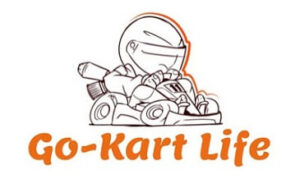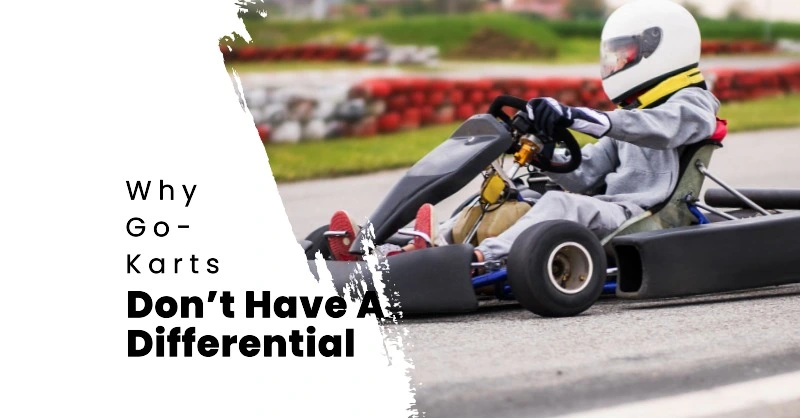Despite the advanced engineering that goes into creating these machines, one might notice that go-karts conspicuously lack a differential. A key component in most automobiles allows wheels on either side of the vehicle to rotate at different speeds during turns. This omission may initially seem counterintuitive, given the importance of handling when designing go-karts. However, there are specific reasons why go-kart manufacturers opt not to include a differential.
| Key Takeaways |
|---|
| FIA regulations prohibit differentials in go-karts, ensuring fairness and safety in competitions. |
| Adding differentials would negatively impact go-kart performance by increasing weight and raising the center of gravity. |
| Go-kart drivers use techniques like jacking and flexible frames to compensate for the absence of differentials. |
| The lack of differentials contributes to the unique identity of go-kart racing, celebrated for its excitement and entertainment value. |
Understanding the Role of Differentials
To grasp the reasoning for this design choice, it’s vital to understand differentials in conventional automotive systems and their benefits. Differentials distribute torque between two driven wheels, allowing independent rotation and optimal traction. This enables smooth cornering and less tire strain by preventing slippage and uneven wear.
Functional differentials are essential for cars at high speeds or on winding roads. However, their absence in go-karts prompts questions about potential benefits if included. This article examines factors behind this decision and possible impacts on go-kart performance and safety.
Fia Regulations Prohibit Differentials In Go-Karts

It is a well-known fact that the world of motorsports would be utterly lost without the ever-watchful eye and strict guidance of FIA regulations.
One may wonder if go-karts, those tiny but fierce machines racing around tracks at breakneck speeds, are also subject to such regulatory oversight. Indeed, they are; one regulation, in particular, has made it clear that differentials shall not grace the axles of these miniature marvels.
The absence of a differential in go-karts can be attributed directly to FIA regulations, which dictate various technical specifications for this vehicle class to ensure fair competition and safety on the track.
As Shakespeare might have said had he been an automotive engineer: ‘To have or not to have a differential – that is the question.’ FIA’s decree says the answer is a resounding ‘not’. This leaves go-kart racers with their characteristic tire-squealing turns as they navigate tight corners without the benefit of torque distribution between wheels.
Added Weight From Differentials Impacts Go-Kart Performance
As established earlier, the FIA regulations play a significant role in prohibiting differentials in go-karts. These rules aim to maintain fairness and safety among competitors while preserving the unique driving experience that go-karting offers.
In relation to this, there are several reasons why adding weight from differentials can negatively impact go-kart performance:
- Acceleration: The added weight of incorporating a differential would reduce acceleration rates for go-karts, leading to slower lap times and diminished overall competitiveness.
- Handling: Differentials could alter handling characteristics, making it more challenging for drivers to navigate tight corners or execute precise turns on race tracks.
- Costs and complexity: Implementing differentials increases both the production costs and mechanical complexity of go-karts, which ultimately raises consumer prices and may deter newcomers from participating in the sport.
Considering these factors, it becomes evident that maintaining the prohibition of differentials in go-karts is essential. And not only for adhering to regulatory guidelines but also to preserve the distinctive nature of kart racing as an accessible motorsport discipline with consistent performance attributes across all participants.
By avoiding unnecessary complications and preserving fair competition within their design principles, go-kart manufacturers ensure that this thrilling form of motor racing remains enjoyable for enthusiasts at every level.
Differentials Raise Go-Kart’s Center Of Gravity
Integrating a differential into a go-kart’s design would elevate the vehicle’s center of gravity. A higher center of gravity can negatively impact handling and stability. It increases the likelihood of tipping over during sharp turns or abrupt maneuvers.
Furthermore, the additional weight from incorporating a differential may also hinder acceleration and overall performance.
While differentials serve an essential purpose for everyday vehicles by allowing wheels to rotate at varying speeds while cornering, this functionality is not crucial for go-karts due to their relatively low speeds and simplistic driving dynamics.
Maintenance Requirements Increase With Differentials
In automotive engineering, differential systems can be compared to a double-edged sword; on the one hand, they provide improved traction and handling for vehicles traversing through uneven terrain or taking sharp turns. On the other hand, their complex design necessitates regular upkeep.
The juxtaposition of these beneficial attributes with increased maintenance requirements is particularly evident in go-karts designed for simplicity and cost-effectiveness.
As previously mentioned, go-karts typically forgo implementing differentials due to their inherent complexity and associated costs.
Maintenance tasks such as oil changes, gear adjustments, and periodic inspections become necessary when a differential system is integrated into the vehicle’s drivetrain.
Consequently, this added financial and operational burden makes it less practical to include differentials in go-kart applications where simplicity and affordability reign supreme.
Go-Kart Techniques To Compensate For Lack Of Differential:
Go-kart techniques have been developed to compensate for the lack of differential, which leads to improved handling and performance.
One such method involves managing tire rotation to maintain an optimal driving conditions throughout turns and on various terrains.
Understanding the dynamics of go-karts and employing these specific techniques can substantially enhance a driver’s ability to navigate corners efficiently.
Applying proper weight distribution, acceleration control, and braking strategies enables smoother cornering despite the absence of a differential system in go-karts.
Utilizing Jacking
A Herculean feat in go-karting, weight jacking has emerged as an ingenious solution to counteract the lack of a differential. By capitalizing on this phenomenon, drivers can achieve greater traction and cornering capabilities even when their karts are equipped with live axles.
In essence, weight jacking refers to strategically transferring weight within the kart frame. It does this during cornering maneuvers, which enables better control and improved handling.
The Commission Internationale de Karting (CIK) recognizes the benefits of weight-jacking techniques for competitive racers who aspire to optimize their performance on the track. Adept competitors can fine-tune their karts’ handling characteristics according to specific racing conditions through meticulous adjustments to seat positioning, wheel alignment, and suspension settings.
As such, they may effectively overcome inherent limitations associated with live axle setups without resorting to differentials that would otherwise increase complexity and maintenance requirements.
Employing A Flexible Frame
Another method that go-karts employ to achieve optimal performance is incorporating a flexible frame. The absence of a differential in these vehicles requires alternative strategies for cornering and maintaining traction, where the significance of employing a flexible go-kart frame comes into play.
A flexible frame allows go-karts to navigate turns efficiently without losing speed or stability.
This design compensates for the lack of a differential by allowing chassis flex during cornering, improving grip and overall handling.
Thus, it becomes evident that having a flexible frame plays an essential role in overcoming the challenges posed by not incorporating differentials in go-kart designs.
Conclusion
To sum up, the absence of differentials in go-karts contributes to their exciting and competitive aspects. FIA regulations ensure fair competition for racers globally by imposing specific constraints.
Surprisingly, incorporating a differential would negatively affect the go-kart’s performance, designed for speed and agility, by adding weight and raising the center of gravity. The increased maintenance requirements would also remove crucial activities such as practice and strategizing.
Instead of focusing on the lack of differentials, it’s worth admiring how drivers adapt by employing techniques like jacking and using flexible frames to overcome this limitation. These innovations demonstrate human ingenuity and heighten the thrill of go-kart racing.
Ultimately, what might seem like a restriction has played a significant role in shaping the distinct identity of go-kart racing, celebrated worldwide for its excitement and entertainment value.
Frequently Asked Questions
Go-karts do not have rear differentials. Instead, they use a solid rear axle for simplicity and cost-effectiveness. This design choice allows for easier maintenance and more straightforward construction, essential for go-kart racing.
Since go-karts don’t have differentials, no specific mechanism allows the wheels to rotate at different speeds during turns. Instead, drivers must rely on techniques such as weight shifting and chassis flex to navigate corners effectively and maintain speed.
A go-kart rear axle is a solid bar that connects both rear wheels. This setup ensures that both wheels rotate at the same speed, simplifying the drivetrain and reducing the kart’s overall cost. It also contributes to the unique driving experience of go-kart racing.
The transmission system of a go-kart is usually a simple, single-speed setup. It consists of a centrifugal clutch or a torque converter, which transfers power from the engine to the rear axle. This straightforward design is efficient and keeps the go-kart lightweight and easy to maintain.
Go-karts typically have a simple drivetrain consisting of an engine, a single-speed transmission, and a solid rear axle. This design is cost-effective, easy to maintain, and suitable for the lower speeds and tight turns experienced in go-kart racing.
The difference between a live axle and a differential on a go-kart lies in their function. A live axle is a solid bar connecting both rear wheels, causing them to rotate at the same speed. In contrast, a differential allows each wheel to rotate at different speeds, providing smoother cornering and better automobile traction. Go-karts don’t have differentials due to cost, simplicity, and the unique driving experience it provides.


